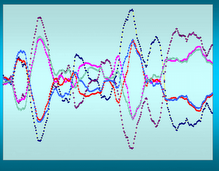Well not really – we’re still going to talk about markets and trading. But as promised here is a look at what happens on gap ups over the next day or so. And there were some interesting findings. I looked at stocks in my favorite range of 20 – 35 dollars and I built a filter that simply said:
Show stocks where close is between 20 and 35 and;
the 90 day average volume is more than 500000 shares; and
the close is less than the EMA 90 (from the other day’s post); and
the close is greater than the open; and the open was greater than the close of 1 day ago.
Then I began testing it to determine what the best set of conditions would be. What I found was by using a stop loss of 10%, a 2 day maximum holding period, buying no more than 2 stocks in any one day and holding no more than 4 stocks in the portfolio at any one time I could achieve optimum results.
I had no exit based on a profit percentage I just held the stocks for 2 days and sold them at the close on the second day. By doing this I could take a 100K trading account and yield 51K profit in 77 days.
Nobody can do that of course but that was the best yield I could attain in my back testing. What this suggests is that you if you use a short term holding period with a few stocks that meet the above filter requirements you will probably make some money. Each day the 2 stocks are to be selected based on the 2 highest average volume stocks found in that days filter output. By limiting the portfolio to no more than 4 stocks at a time I optimized the number of shares purchased simply by using 25% of the total available portfolio up to the amount of cash available.
I don’t know how many different runs I made but they were substantial. And my findings are interesting in their own light. For example if I set the system to hold 10 days maximum under the same buying and portfolio conditions the yield was only 23K. That suggests that stocks that gap up have a short half-life and you should take advantage of them as quickly as you can. Fortunately there are a lot of gap ups every day.
Another finding that should be obvious is the fact that the more stocks you hold the fewer stocks you can buy given a finite trading account. This means that if you back test be sure to set your starting cash position to something that is reasonable. I always think that diversification is a word brokers use to get more commissions. Now if you diversify by hedging one investment against another – well that’s different. But if you diversify by holding 40 stocks in a portfolio – that’s stupid.
Needless to say you can not roll your funds over as fluidly as you can in a back test environment – there is no three-day hi-jack period where the brokerage makes money from your money and you do not. Nor do you pay commissions in the back test world.
And of course you always get the optimal open and closing prices but once again the dollar value is only an indicator that suggests the optimization of the conditions.
As usual this is not an invitation to speculate in the wonderful world of high finance because as most of my reader (hi Mom) knows - it isn't a place for nice people to be found.
Subscribe to:
Post Comments (Atom)

No comments:
Post a Comment